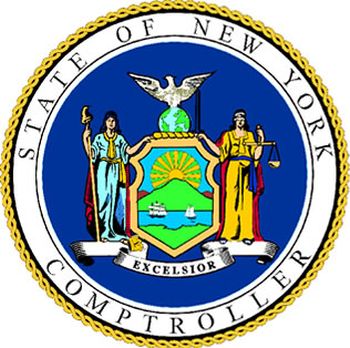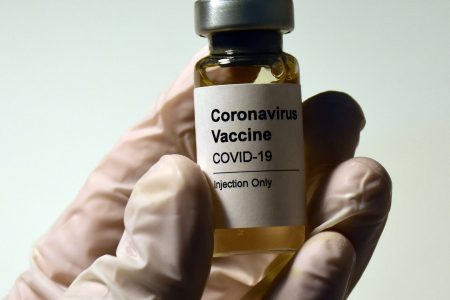Today, New York City Comptroller Scott M. Stringer released a comprehensive food security plan to combat hunger in New York City and reach any New Yorker in need regardless of immigration status. Comptroller Stringer called for the City to create a $25 million emergency food program to serve undocumented New Yorkers left out of federal and state safety net programs, expanded SNAP outreach and purchasing power, and increased cultural competence in the City’s current food programming to ensure that New Yorkers of all backgrounds are able to access benefits.
Comptroller Stringer also proposed the creation of a “shared delivery zone” program that would allow neighbors to accept food deliveries from online retailers at a central location, combining their purchasing power to meet retailers’ minimum purchasing requirements and share in the cost of delivery fees.
The CoViD-19 pandemic has acutely heightened food insecurity in New York City. An estimated 1.6 million New Yorkers report being unable to afford food – an increase of 400,000 in the last year. New York City employment remains 605,000 jobs below pre-pandemic levels, with the majority of job losses concentrated in lower-wage sectors and communities of color. According to Comptroller Stringer’s Popular Annual Financial Report, nearly one in four New Yorkers of color lost their jobs in the economic fallout of CoViD-19. However, New York City Human Resources Administration (HRA) data indicate that 42,000 fewer New Yorkers are receiving SNAP benefits today than in 2015.
“There is no excuse for a single person to go hungry in one of the wealthiest cities in the world, yet more than 1.6 million New Yorkers go to bed hungry in our city every night,” said Comptroller Stringer. “We do not have a food shortage in New York City – we have a management shortage. Our current food programs are simply not reaching enough of the New Yorkers who are most food insecure – especially lower-income New Yorkers, New Yorkers of color and immigrant New Yorkers hit hardest by the economic devastation of CoViD-19. My emergency plan to combat food insecurity meets New Yorkers where they are regardless of immigration status, cultural background or language. Hunger does not discriminate – and neither should we.”
Comptroller Stringer offered immediate local, state and federal recommendations to combat food insecurity and close gaps in the social safety net:
Create an emergency food program to serve undocumented New Yorkers using $25 million in FEMA reimbursement funding. The Biden Administration has agreed to lift the cap on FEMA reimbursement for New York State and City’s pandemic related costs, clearing the way for 100 percent reimbursements. This will result in $1 billion in reimbursements for New York City. This funding creates an opportunity to address food insecurity among New Yorkers who cannot access the federally funded SNAP program due to immigration status. The City should dedicate at least $25 million of this funding to create food security programs for immigrant New Yorkers who have been left out of other safety net programs.
Increase and improve SNAP outreach to ensure all eligible New Yorkers are receiving this valuable benefit. While emergency food programs are a crucial part of our food security system, there is no substitute for putting money into people’s pockets to enable them to purchase food for themselves. The Biden Administration has authorized the increase of SNAP benefits, making this critical benefit even more valuable to New Yorkers. Yet the most recent HRA data indicates that 42,000 fewer New Yorkers are receiving SNAP benefits today than in 20151. To ensure that all eligible New Yorkers are receiving SNAP, the City should:
- Create a comprehensive, coordinated, citywide outreach campaign to educate New Yorkers about SNAP benefits and encourage enrollment. This should be combined with outreach efforts to promote the Special Supplemental Nutrition Program for Women, Infants, and Children (WIC), Earned Income Tax Credit (EITC), senior meals, and summer meals to ensure New Yorkers are using the programs they are eligible for and entitled to.
- Provide more funding for community-based organizations (CBOs) to conduct SNAP outreach and enrollment, particularly ones with linguistic and cultural competence to reach New Yorkers across our city’s diverse neighborhoods, including CBOs that work with immigrants and survivors of domestic violence who may have greater barriers to accessing services due to data sharing sensitivities.
- Use data to inform and drive outreach efforts. To the greatest extent possible, the City should examine data sets from agencies including Human Resources Administration, Department for the Aging, Administration for Children’s Services, Department of Education, and Department of Finance to identify New Yorkers who may be eligible for SNAP and ensure that information about the program is shared with them via mail, text, or phone.
- Streamline the process of applying for multiple benefit programs by creating one online portal that informs New Yorkers about key benefits, allow required interviews to cover multiple program applications whenever possible, and work towards sharing application data between programs to the greatest extent possible under city, state and federal law. This would reduce the time consuming, confusing, and bureaucratic application process that can deter New Yorkers from seeking the full range of benefits they are eligible for.
- The State should increase funding for SNAP outreach to further support these activities in New York City, and take a similar data driven approach by establishing a statewide process for data sharing between Medicaid and SNAP cases to identify Medicaid recipients who are not receiving SNAP.
Increase where and how EBT cards can be used to give SNAP beneficiaries more purchasing power. While EBT cards can be used in-person at most supermarkets and major retailers, there are very few online retailers that accept SNAP. This means that New Yorkers living in food deserts cannot use their SNAP benefits to buy food online and have it delivered to their homes – missing a major opportunity to increase food security. Further, most bodegas, green carts, and local merchants like halal and kosher butchers do not have EBT terminals, limiting options for New Yorkers to use their benefits close to home, and denying sales opportunities to local businesses that are often minority and immigrant owned. To increase opportunities for SNAP usage:
- The Federal government should expand the SNAP Online Purchasing Pilot to include local grocery stores, smaller retailers and farmers markets. Currently the pilot allows SNAP to be used when ordering groceries online from select Amazon, Shop Rite, and Walmart stores in New York State. To increase food access for more New Yorkers, USDA should identify and enable farmers markets, smaller local grocery stores, as well as chains that have a larger presence in New York City, to participate in the pilot.
- Congress should change federal law to allow SNAP beneficiaries to purchase hot food at SNAP authorized retailers. This will allow New Yorkers who do not have cooking facilities at home, or do not know how to cook, to be able to purchase complete meals.
- The State should work with USDA to include New York in the SNAP Restaurant Meals Program to enable people who are currently homeless, people with disabilities, and older New Yorkers to use SNAP at select restaurants.
- The City should support expanded use of SNAP benefits at green carts, bodegas, and local merchants like halal and kosher butchers by funding, or seeking funding, to subsidize the cost of EBT terminals and transaction fees, and working with the State to obtain waivers from USDA where needed. This would have a secondary benefit of increasing business opportunities for small businesses, many of which are immigrant, minority, or women owned.
- The City should create a “shared delivery zone” program that allows neighbors to accept food deliveries from online retailers at a central location, allowing them to combine purchasing power to meet retailer’s minimum purchasing requirements and share in the cost of delivery fees. This would be especially useful at NYCHA developments where deliveries could be made to community rooms, allowing residents to simply retrieve their groceries from an onsite location on their way home.
Make immediate plans to fill gaps in the City’s food pantry network. Ten and a half months into the pandemic, there are still gaping holes in the city’s food pantry network that have not been filled. Food Bank for New York City’s recent analysis found that 38 percent of emergency food providers across the five boroughs had closed by mid-April, with a whopping 50 percent of Bronx emergency food providers shutting their doors. As a result, more and more New Yorkers are traveling farther from their neighborhoods to find emergency food. The City should be taking immediate steps to provide emergency food in the City’s food pantry deserts while planning for more permanent investments. To ensure New Yorkers can access emergency food no matter where they live, the City should:
- Conduct a comprehensive assessment of the City’s food pantry network to identify areas that are underserved by emergency food providers but have high rates, or pockets of, food insecurity.
- Invest in programs to bring emergency food to those areas in the near term, including opening pop-up pantries in community locations like senior centers that have refrigerator space but are currently closed due to the pandemic, and increasing programs like mobile markets that bring fresh food to communities by truck.
- Immediately allocate an additional $25 million to ensure existing pantry operations can keep up with demand for the remainder of Fiscal Year 2021, and ensure funding for emergency food providers to connect their customers with SNAP, WIC, tax refunds, and job training and placement services.
Increase the cultural appropriateness of the City’s current emergency food programs so more New Yorkers will take advantage of them. The City has spent hundreds of millions to bring food to New Yorkers in need through the City’s Get Food boxes and grab and go meals at Department of Education (DOE) school sites – programs that serve all New Yorkers regardless of immigration status. The Get Food program has been critical for seniors who are staying safe by staying home. Despite this tremendous investment, many New Yorkers still do not find food that they want to eat or know how to cook with through the City’s programs. The City should consider the following changes to increase utilization of its programs:
- Increase the amount of fresh fruits, vegetables and pantry staples that are available in the City’s Get Food boxes and provide more choice to allow people to receive food that meets their dietary needs.
- Ensure that food offered through DOE’s grab and go locations provide options that are culturally relevant to the surrounding community, as well as appropriate for both children and adults.
- Continue to improve the quality and diversity of kosher and halal food options in both Get Food boxes and grab and go meals.
- Work with local restaurants, caterers, and markets to ensure they can participate in the Get Food program, and if they cannot meet the current or future RFP requirements alone, encourage submissions through multi-business partnerships. This would increase the diversity and cultural appropriateness of the food provided while creating opportunities for minority, immigrant and woman-owned businesses who have struggled during the pandemic.
Strengthen federally funded Child Nutrition Programs to ensure no child in New York City goes hungry. School-based nutrition programs and the Special Supplemental Nutrition Program for Women, Infants and Children (WIC) are critical to ensuring the nutritional needs of New York City children and expectant and new mothers are met regardless of immigration or citizenship status. Additional federal investment would create further tools to combat food insecurity among the youngest New Yorkers. The following action should be taken to increase food access:
- Congress should make improvements while reauthorizing Child Nutrition Programs to ensure sufficient federal reimbursements for the breakfast, lunch and afterschool meals that New York provides free of charge and establish a permanent summer and vacation EBT program so families can continue to receive support to purchase food for their children all year round.
- Congress should extend WIC eligibility for children up to their sixth birthday to ensure that children who are not enrolled in school programs until then can still access food assistance.
Create borough-based councils of emergency food providers, advocates, community and faith-based organizations, and mutual aid networks to partner with the City on improving food access. Local organizations have unique knowledge of community needs, deep networks of relationships, and the trust of the communities they serve. The City should create borough-based councils so food network stakeholders can advise the City on local needs and priorities, help shape community engagement strategies, and provide input on the City’s food programs, policies, and initiatives.
“Immigrant families are struggling to make ends meet and low English proficiency coupled with low digital literacy and access make our communities particularly vulnerable. Every week we get at least ten new families coming to Sapna NYC asking for food assistance. There simply aren’t enough food pantries in the Bronx and those that do exist aren’t able to provide culturally appropriate groceries that our South Asian families are used to eating. Sapna’s pantry helps meet the basic needs of our community, but what starts with a simple bag of groceries grows into a relationship where families have a trusted resource that can provide culturally competent in-language help for benefits applications, financial assistance, CoViD-19 information, domestic violence survivor support, workforce development programming and so much more. Comptroller Stringer’s plan addresses these needs head-on. The City needs to increase investment in small community-based organizations to ensure that the information and relief efforts that are being put forth reach our most vulnerable communities. Being a part of the community we serve means we are the best equipped to make sure no one gets left behind,” said Diya Basu-Sen, Executive Director of Sapna NYC.
“Comptroller Stringer’s comprehensive food security program to address hunger is good news for immigrants, communities of color and women and children who make up the majority of New Yorkers suffering from food insecurity—now and before CoViD-19. The creation of a $25 million emergency fund for those not eligible for federal aid; the expansion of SNAP outreach; and increased of access to EBT terminals at local groceries, green carts and Halal and Kosher butchers will help make sure that no New Yorker—no matter what her race, religion, immigration status or economic background might be—will have to go hungry,” said Rev. Dr. Chloe Breyer of the Interfaith Center of New York.
“The pandemic has exacerbated the pain points and revealed the fault lines beneath many of our fundamental institutions; from healthcare, education, housing, criminal justice, immigration and many others, to accessing vital basic needs like food. New Yorkers are known for coming together and taking care of each other during times of crisis. When the federal government lacks the will or strategy to ensure all families have access to basic vital resources like food, and with undocumented immigrants often falling through the policy cracks or cruelly carved out, we must come up with local solutions to ensure all of the most at-risk and impacted New Yorkers are taken care of, and show through leadership the types of steps that can and must be taken if we are committed to an equitable recovery. I thank Comptroller Stringer for shedding light on this growing issue and coming to the table with real, actionable solutions,” said John Park, Executive Director at the MinKwon Center for Community Action.
“Comptroller Stringer’s shared delivery zone proposal would be a lifeline to NYCHA residents who cannot afford steep minimums and delivery charges when ordering food from online retailers. The option to centralize our orders with our neighbors would allow more of our money to be spent on food, not fees – and increase purchasing power across Lexington Houses. This is a smart idea from Comptroller Stringer and I urge the City to implement it immediately because in this economy, every dollar counts and there’s no time to waste,” said Christina Johnson, President of the Lexington Houses Tenant Association.
“We cannot stand idly while more and more New Yorkers go hungry in a city full of food. That’s why Comptroller Stringer’s plan to expand culturally-competent, inclusive food options and outreach has never been more urgent. The majority of the City’s job losses and economic pain has been borne by immigrant communities and New Yorkers of color, but food programs are not reaching enough of the New Yorkers most at risk of hunger –especially food-insecure immigrant seniors without support networks. The recommendations in Comptroller Stringer’s plan would help feed so many in our community, and we hope the City listens,” said Dr. Vasundhara Kalasapudi, Executive Director of India Home.
“All New Yorkers deserve local access to affordable, fresh, nutritious, culturally relevant food choices. Comptroller Stringer’s Food Security Plan highlights some significant steps that New York City can take to promote more just access to these vital necessities in all communities. Equitably expanding EBT purchasing power to the businesses that our communities rely on most directly means more affordable access to the full range of choices that all of our neighbors deserve,” said Allison Marino, Director of External Relations for Phipps Neighborhoods and Director of Bronx Impact Alliance, Community District 6.
“We are happy to see the Comptroller’s inclusive food security plan that includes all New Yorkers. This pandemic has shown us the difficulty Muslims face in securing food that abides by their dietary restrictions from the City, specifically working-class Muslims who would rely on city services more. Furthermore, we welcome the Comptroller’s proposal to fund community-based organizations that are involved in SNAP enrollment and outreach, a pivotal move that empowers this city’s diverse populations. It is paramount that City services reflect the people they benefit, and ensuring Halal food for Muslim New Yorkers is a much needed step in the right direction. Majlis Ash-Shura: Islamic Leadership Council of New York, an umbrella organization that represents over 90 Masjids and Muslim organizations, will continue to coordinate and advise the city on securing Halal food citywide, and welcomes Comptroller Stringer’s efforts in furthering this goal,” said Mosaab Sadeia, Outreach Manager at Majlis Ash-Shura: Islamic Leadership Council of New York.
“The ongoing effects of the pandemic have resulted in severe hardships for millions of immigrant New Yorkers, especially communities of color and lower-income residents in the outer-boroughs. Comptroller Stringer’s food security plan to combat hunger in New York City is a comprehensive and much-needed plan to serve our underserved lower-income immigrant communities with dignity and respect– which every New Yorker deserves regardless of immigration status, ethnicity, skin color or language. Currently, the food insecurities in New York City are extreme, with very limited Halal food options. The City’s Get Food program does not adequately meet the dietary needs of Muslim communities, though the Muslim population of New York City is approaching one million. Comptroller Stringer’s proposed plan takes into account cultural and religious sensitivities and calls for diverse Halal food options for Muslim New Yorkers and we fully support it,” said Pervez Siddiqui, Chairman of the APNA Brooklyn Community Center.
“Vision Urbana was the only food pantry on the Lower East Side that never closed its doors during this pandemic and Comptroller Stringer’s food security proposals can help us and others continue to keep the doors open. To meet the urgency of feeding our most vulnerable, Vision Urbana evolved from our regular on-site pantry model, to actually providing a home delivery option we call ‘Pantry Express’ where our staff and volunteers take critical provisions right to the door of hundreds of more families and older adults, keeping them in the safety of their own homes. The response to our Pantry Express Program has been overwhelming on the Lower East Side and the continuing demand is high particularly for our seniors and their care givers. If we are to continue our successful pantry services, Vision Urbana will need more resources to cover increased expenses and the growing demand for food, particularly in our surrounding NYCHA developments. The Comptroller’s recommendations are necessary, so organizations can meet the needs of the communities we serve so that New Yorkers don’t go hungry,” said Eric Diaz, Executive Director of Vision Urbana.
.









